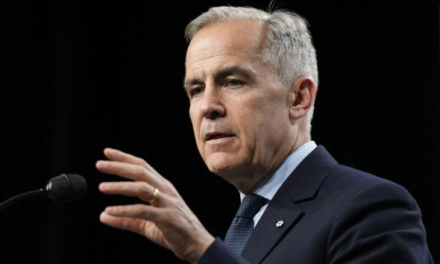The US technology sector is closely watching the upcoming initial public offering (IPO) of Figma, the popular cloud-based design platform. Targeting a valuation of approximately $16 billion, Figma’s public debut is set to be a significant milestone, not only for the company itself but also as a litmus test for the appetite of investors in the current US tech IPO market.
With the tech sector still recovering from the turbulence of recent years, including market volatility and economic uncertainty, Figma’s IPO will be one of the largest and most high-profile public offerings in the software-as-a-service (SaaS) space this year. Its success could signal renewed confidence in tech companies with strong growth potential and innovative business models.
Figma’s Journey: Innovating Design Collaboration
Founded in 2012 by Dylan Field and Evan Wallace, Figma entered the competitive world of design tools with a vision: to revolutionize how designers work together. Unlike traditional design software, which often relied on desktop installations and file exchanges, Figma introduced a cloud-native, real-time collaborative design platform. This allowed multiple users to work simultaneously on the same project, streamlining workflows and reducing the friction of version control.
This collaborative approach quickly gained traction among individuals, design teams, and large organizations. Companies like Microsoft, Zoom, Twitter, and Airbnb adopted Figma to improve productivity and creativity. Particularly during the rise of remote and hybrid work arrangements brought on by the COVID-19 pandemic, Figma’s cloud-based solution became even more essential.
The platform’s flexibility extends beyond graphic design—it’s used for prototyping, wireframing, and user interface design, making it an all-in-one tool for digital product teams. This broad appeal has helped Figma build a large and loyal user base.
Strong Growth and Funding Support
Figma’s growth story has been supported by substantial funding rounds from some of the world’s top venture capital firms. Early investors included Sequoia Capital, Andreessen Horowitz, and Index Ventures. The company raised hundreds of millions of dollars, with valuations rising sharply with each round.
In its latest private funding rounds, Figma’s valuation was reported to be in the $10 billion to $15 billion range, indicating investor confidence ahead of the IPO. The company’s revenue growth has been impressive, with reports indicating strong annual recurring revenue (ARR) growth rates—though exact numbers remain private until after the IPO.
The planned IPO will provide Figma with access to public capital markets, enabling further investments in product development, market expansion, and potential strategic acquisitions. It will also provide liquidity to early investors and employees.
Why the $16 Billion Valuation Is Significant
Setting a $16 billion valuation for its IPO places Figma among the top-tier tech IPOs in recent years. It reflects both the company’s current scale and the optimism investors have about its future.
However, the valuation is not without challenges. The US tech IPO market has been volatile over the last couple of years. Many companies, especially in the tech and SaaS sectors, have faced downward pressure on valuations due to inflation concerns, rising interest rates, geopolitical tensions, and a general shift toward profitability over pure growth.
Figma’s valuation will be tested against this backdrop, making it a critical indicator of whether investors are willing to bet big on SaaS companies that prioritize innovation and user engagement over immediate profitability.
The Broader Market Environment
The broader economic environment plays a large role in shaping the outlook for Figma’s IPO. The Federal Reserve’s moves to combat inflation through interest rate hikes have led to more cautious investing, especially in growth stocks like tech companies.
Additionally, ongoing geopolitical concerns and regulatory scrutiny have added to market uncertainty. For tech companies, especially those dealing with cloud computing and user data, these factors can influence investor confidence.
Despite these headwinds, the SaaS sector remains attractive because software solutions that facilitate remote work, digital transformation, and improved collaboration continue to see strong demand. Figma’s unique position as a leader in design collaboration software gives it an advantage.
Interestingly, much like how families and friends gather to celebrate Hot Dog Day with fun and food, tech enthusiasts and investors are gathering around the IPO market with anticipation and excitement about new growth opportunities. It’s a moment of celebration and cautious optimism, where the community watches to see if Figma’s debut will spark a fresh wave of enthusiasm in the tech sector.
Post-IPO Outlook and Potential Challenges
If Figma’s IPO meets or exceeds its valuation goals, the company will enter the public market with significant momentum. This capital injection could accelerate product innovation, enhance integration with other tools, and boost global expansion efforts.
Figma will likely face increased pressure to demonstrate consistent growth and financial discipline. Public shareholders tend to demand transparency and quarterly performance, which can challenge companies used to the flexibility of private markets.
Competition also remains fierce. Adobe, a giant in the creative software space, continues to push its products like Adobe XD, while startups like Sketch maintain loyal followings. Figma will need to maintain its edge through constant innovation and customer engagement.
Why Figma’s IPO Matters Beyond Just One Company
Figma’s IPO will be closely watched by market analysts, investors, and tech enthusiasts as a barometer for the health of the broader tech IPO market. After a period where many IPOs and special purpose acquisition companies (SPACs) struggled post-listing, a strong performance by Figma could restore confidence in the public markets for tech firms.
Moreover, Figma’s IPO underscores the growing importance of cloud-based collaboration tools in today’s workplace. As businesses continue to adapt to hybrid models and increasingly digital workflows, companies like Figma that facilitate this shift stand to benefit immensely.
For those who enjoy the outdoors and appreciate how ecosystems work in harmony—much like a national park preserves the balance of nature—Figma’s platform preserves the balance of creativity and productivity among digital teams, allowing them to flourish in a collaborative environment. This harmony between technology and human creativity reflects a new era of work and innovation.
Conclusion: A Pivotal Moment for Tech and SaaS
The upcoming Figma IPO, targeting a $16 billion valuation, is more than a corporate milestone—it represents a key moment in the evolving story of the US tech IPO market. Success could usher in renewed enthusiasm for innovative SaaS companies and signal a positive outlook for technology’s future in collaboration and design.
For investors, industry watchers, and users alike, Figma’s public debut offers a glimpse into how technology is shaping the future of work—and how the markets are responding to those changes.






